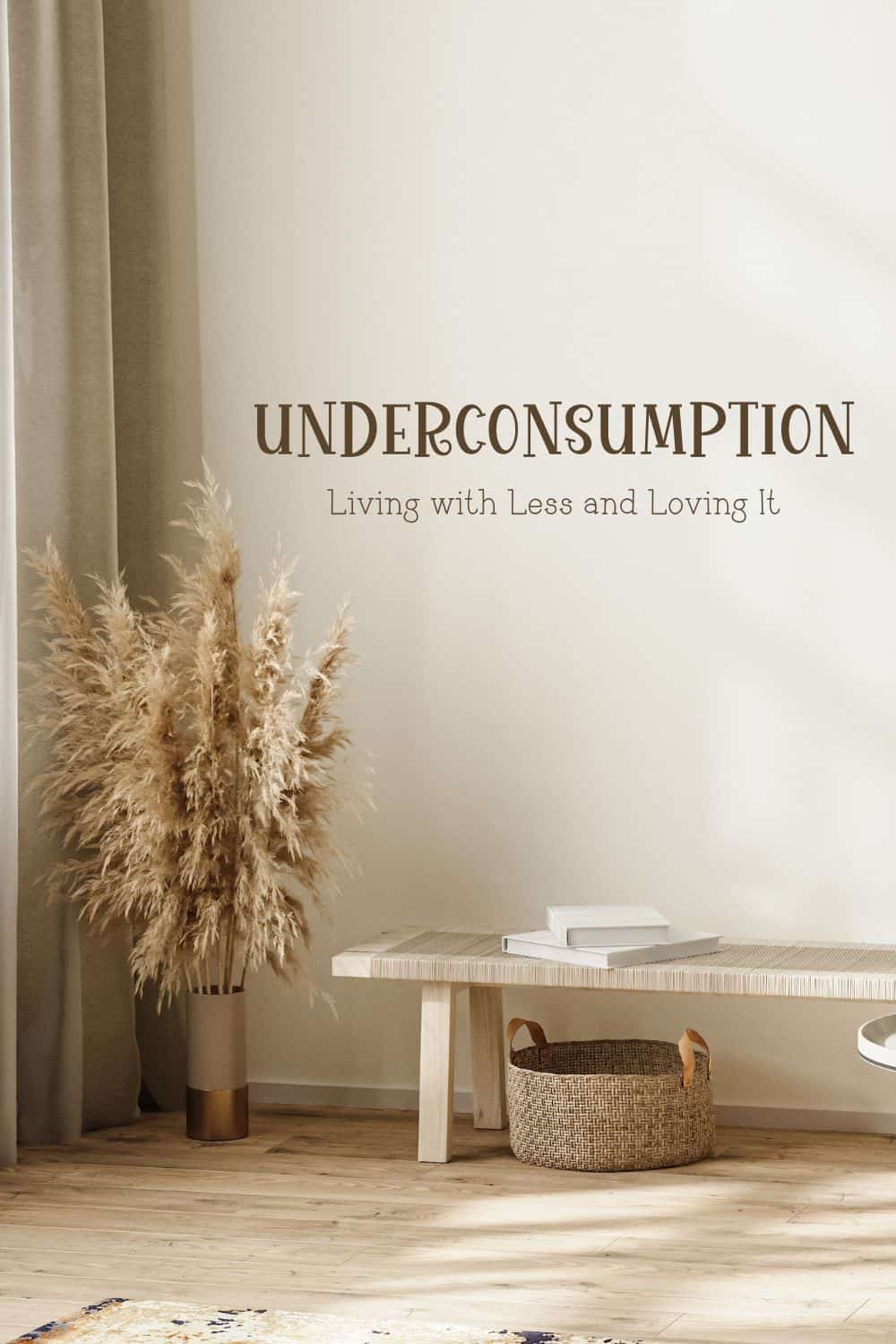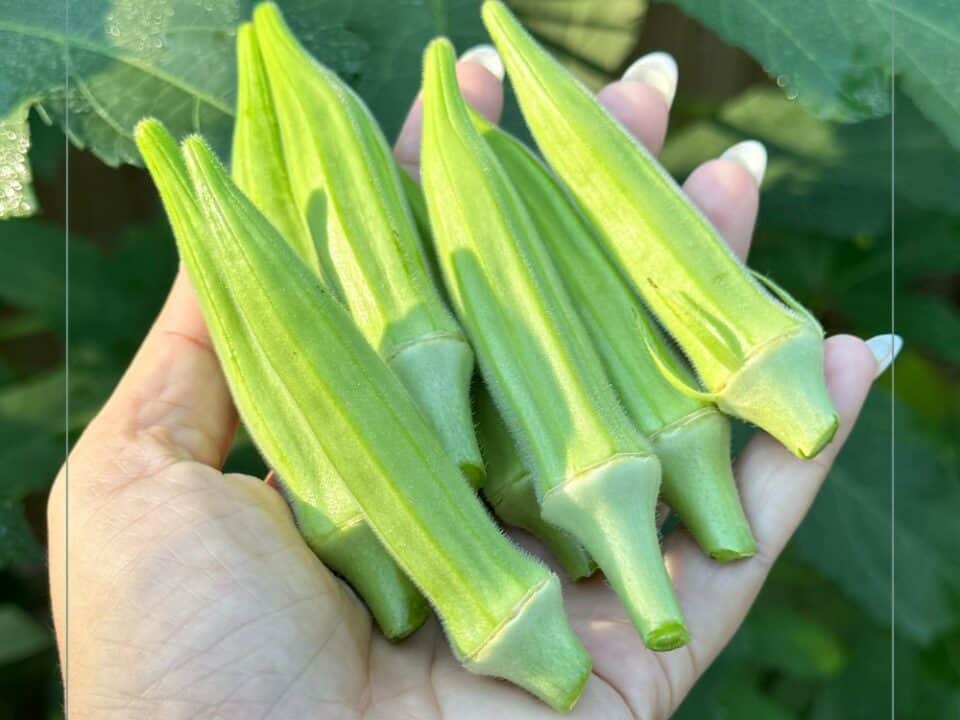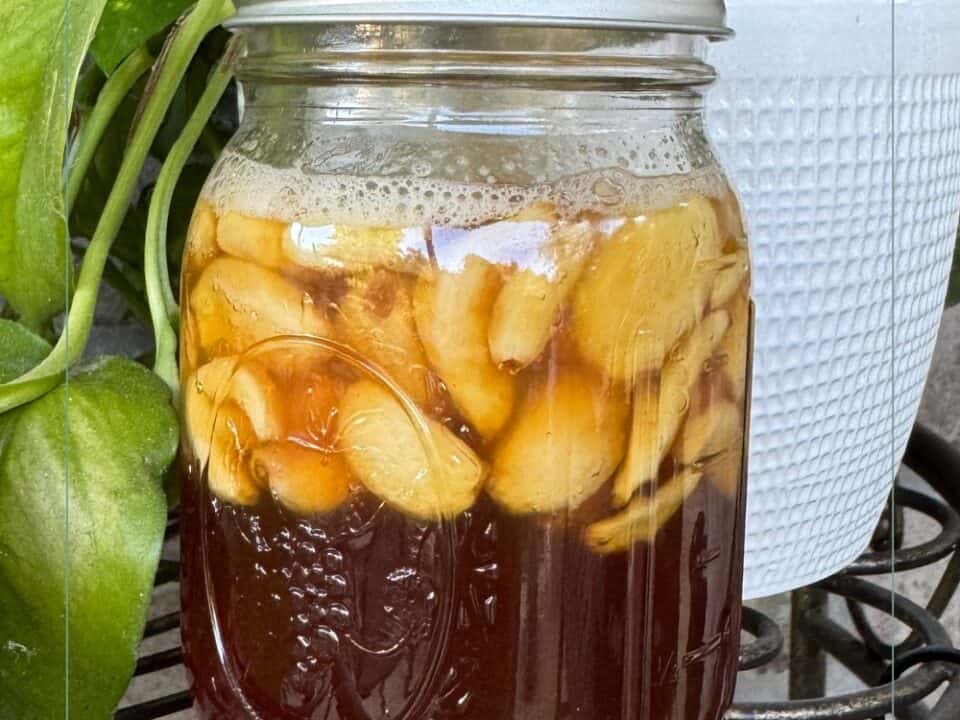Underconsumption: Living with Less and Loving It
The pressure to have “more” has reached an all-time high. More clothes, more shoes, more electronics… the list goes on and on. We are bombarded daily with ads and social media posts showing off endless shopping sprees, making it seem like success and happiness simply means having lots of “stuff.” But maybe real happiness isn’t about having more. Maybe it’s actually about realizing we are better off with less.

This post may contain affiliate links which means we receive a small commission at no cost to you when you make a purchase. As an Amazon Associate, I earn from qualifying purchases.
Underconsumption is the practice of intentionally living with less. It’s not about depriving yourself or going without. It’s about making conscious choices to opt out of the status quo of always wanting more and simplifying your life to enjoy less. From slowsteading to thrifting, people are discovering that they don’t have to buy into overconsumption to live well.
The Pressure of Overconsumption
Hustle culture and consumerism often go hand in hand. We’re told that if we work longer hours we will be able to afford more stuff. And that having more stuff will make us happier and appear more successful. The latest phone, the newest car, and the trendiest clothes are all presented as symbols of happiness and status. Social media has only amplified this mindset with Influencers happily unboxing massive product hauls, showcasing endless purchases that make viewers feel like they’re missing out or will be seen as less than if they don’t do the same.
But this cycle of overconsumption is exhausting, not to mention expensive. Our homes are overflowing with unused items, closets are packed with clothing that rarely gets worn, and bank accounts often go uncomfortably low just trying to keep up. The irony? Many people don’t even feel any happier after the spending spree and in fact often feel worse as they stress about the money needed for actual necessities.
Slowsteading Enters The Chat
Slowsteading is an approach to life that focuses more on simplicity, sustainability, and self-sufficiency. It’s the exact opposite of the fast-paced consumer mindset. Instead of rushing to upgrade the latest car/phone/camera/whatever, slowsteaders take their time to source what they truly need. Slowsteading can also include things like growing some of your own food, repurposing materials, or buying secondhand.
Slowsteading also includes living clutter-free. When you are more selective with your purchases and focus on what you truly need versus what society has tricked you into thinking you need, keeping a tidier home becomes so much easier. When you only keep what you actually use and love, your home feels calmer and more put together. You spend less time dealing with clutter and more time simply enjoying your space.
But living with less doesn’t mean sacrificing quality. In fact, it often means getting to choose better because you haven't wasted your money on a bunch of stuff you didn't need. A thoughtfully selected, well-made item can serve a person for years, whereas cheaply made, trendy products quickly fall apart. Slowsteaders focus on long-term value rather than instant gratification.
The Joy of Thrifting
One of the simplest ways to practice underconsumption is through thrifting. Instead of buying brand-new, many people are turning to secondhand stores, online resale platforms, and community swaps. Not only does this save money, but it also reduces waste and gives new life to perfectly good items.
Not to mention there is the thrill of the hunt and the overwhelming excitement of finding a “treasure” that you have been looking for or that has great value for a fraction of the price. For those of us who want to be a little more unique with our style – and not buy the same thing that 25 other people will buy off the rack that week – thrifting offers a way to stand out while saving money. It is a total win-win.
Thrifting isn’t just limited to clothes and shoes. It can be home decor, furniture, tools, kitchenware, and more. Vintage pieces often have better craftsmanship than modern alternatives, and upcycling old items can turn them into something even more unique. Thrifting also gives new life to forgotten items, reducing waste and adding character to your space. Every piece has a story, and there’s something special about giving it a second chance while saving money in the process.
Breaking Free from Hustle Culture
Hustle culture tells us that we should always be working, always advancing, and always striving for more. But making more money often leads to more spending, not necessarily more freedom. The push to work long hours just to barely afford an ever-growing list of wants keeps people trapped in a cycle that leaves little room for rest or fulfillment.
Too many of us spend years working hard and barely making ends meet, while still spending money on material things we do not need and taking expensive trips and vacations as a way to “reward” ourselves for working so hard. It is no wonder so many adults are completely burnt out and stressed all the time.
Underconsumption challenges this by shifting the focus. Instead of working harder to afford more stuff, why not work less and need less? Choosing a simpler lifestyle can mean having more time for hobbies, relationships, and personal well-being. It’s about defining success on your terms rather than what society dictates.
Mindful Consumption vs. Minimalism
Underconsumption doesn’t mean getting rid of everything and living in a nearly empty home. It’s not minimalism in the extreme sense. Instead, it’s about being mindful of what you bring into your life. Do you need it? Will it add value? Is it built to last?
You may remember the show on Netflix with Marie Kondo called Tidying Up. The show became wildly popular in 2019 when Marie visited overwhelmed families and helped them learn how to organize their homes – much of which simply included getting rid of numerous things that did not “spark joy.”
While it may have sounded hinky and been the punch line of many jokes, the KonMari method resonated with millions of people who felt buried under their belongings. The KonMari method helped many realize that a cluttered home often reflects a cluttered mind and that by letting go of the things they did not need, they could create a space that felt lighter, calmer, and happier.
Some people start with small shifts—pausing before making a purchase, borrowing instead of buying, or opting for quality over quantity. Others take a bigger leap, embracing slowsteading or drastically downsizing their possessions. There’s no one-size-fits-all approach, but the goal remains the same: to consume with intention rather than out of habit or social pressure.
Want to learn more? Check out How To Get Started Slowsteading.
The Environmental and Financial Benefits
Living with less isn’t just good for you—it’s good for the planet too. When we constantly buy new things, we create a huge amount of waste and pollution. Companies tear down forests, drain water supplies, and burn fossil fuels just to keep up with demand. Factories pump out endless products, filling the air with harmful emissions, while plastic packaging piles up in landfills and oceans.
Every cheaply made gadget, fast fashion trend, and single-use item adds to the problem. But choosing to buy less and be more intentional—whether that means thrifting, fixing what we already own, or supporting brands that focus on sustainability—helps cut down on waste. Small choices, like investing in quality over quantity, can have a real impact over time, reducing our footprint and easing the strain on the planet.
Financially, underconsumption can be life-changing. Many people fall into the habit of impulse buying, whether it’s grabbing a trendy item on sale, upgrading gadgets they don’t need, or stocking up on things just because they’re a “good deal.” But small, frequent purchases add up fast, draining bank accounts without adding real value.
Instead of spending money on impulse purchases, people who embrace this lifestyle often save more, pay off debt, or invest in experiences that truly matter. A $5 thrifted sweater serves the same function as a $50 brand-new one, and the extra $45 can go toward something more meaningful—whether that’s travel, education, or simply having a financial cushion.
Building a Life You Love Without Excess
At its heart, underconsumption isn’t about following strict rules—it’s about having more freedom. Freedom from feeling like you always need more. Freedom to focus on what actually makes you happy instead of keeping up with trends. Freedom to build a life that’s full of meaningful experiences instead of just more stuff.
When you stop buying into the idea that you need to own one of everything, things get clearer. You start to see that a lot of what you once thought was necessary was really just clutter. By letting go of the extra stuff filling your home and schedule, you make room for what really matters—creativity, relationships, and a sense of peace.
Living with less doesn’t mean going without. If anything, it means having more of the good stuff—more time, more freedom, and more space for the things that truly make you happy.



